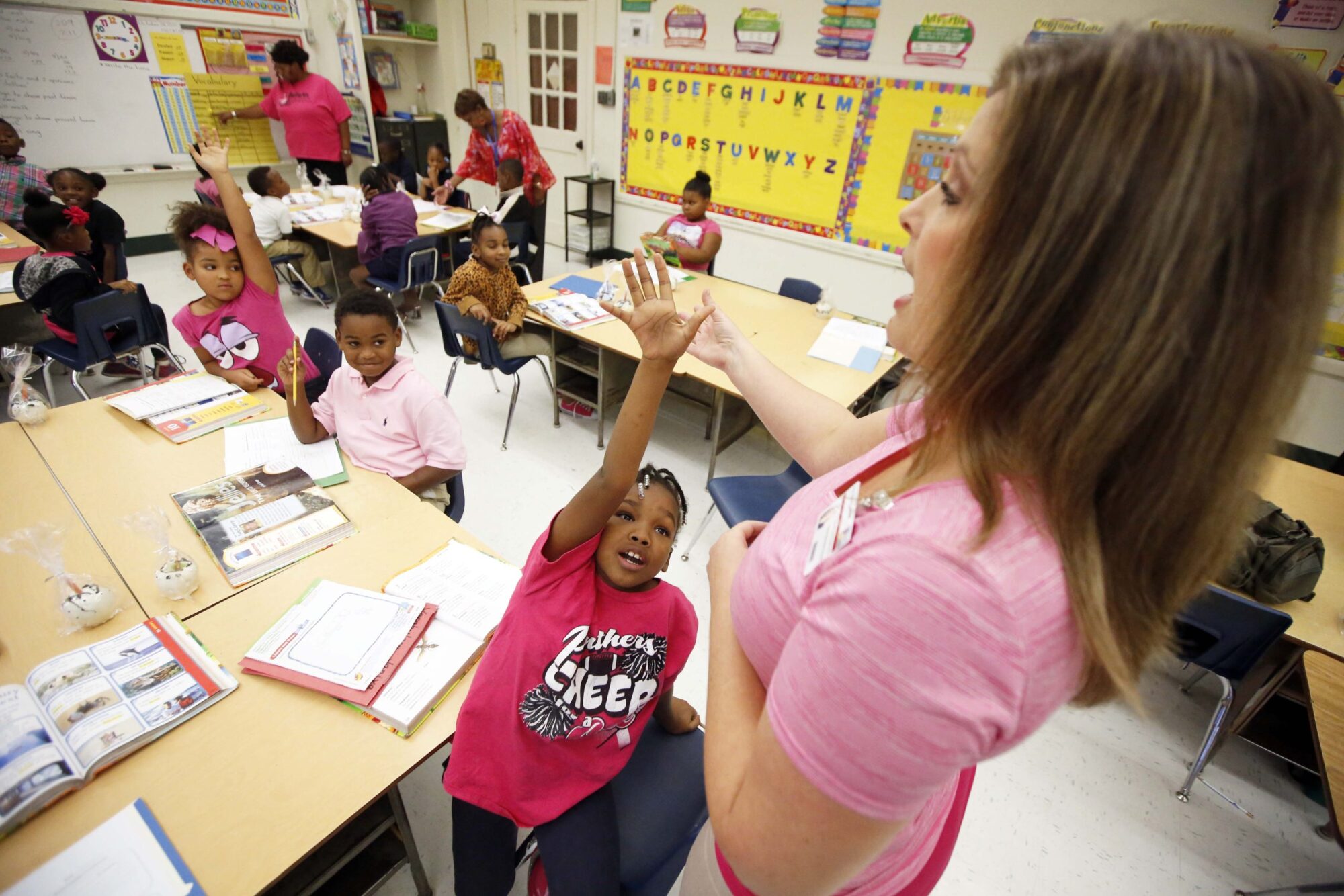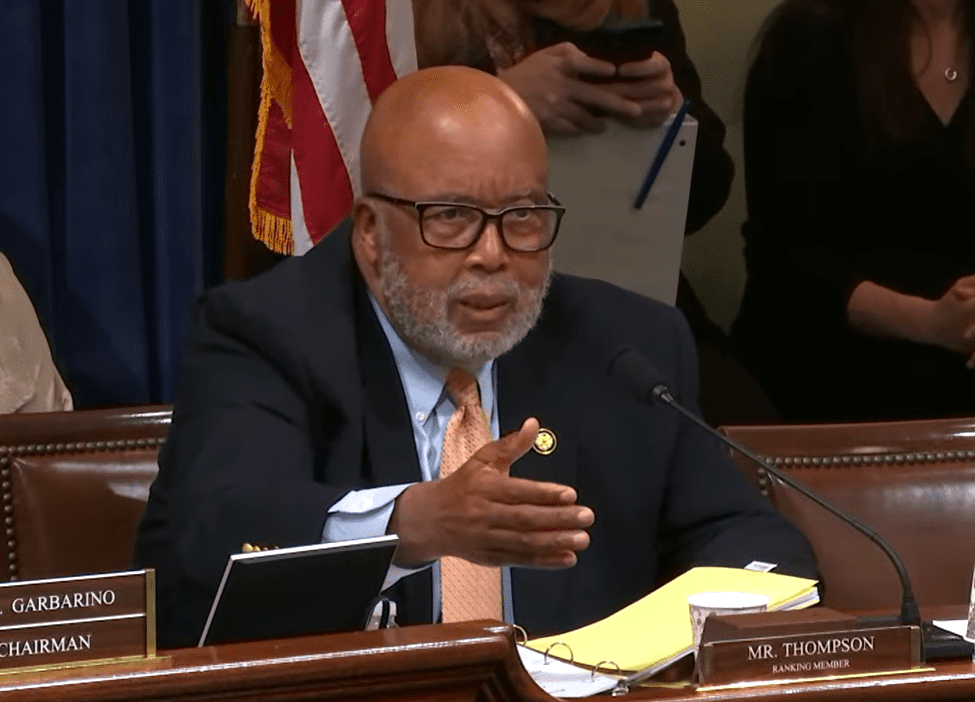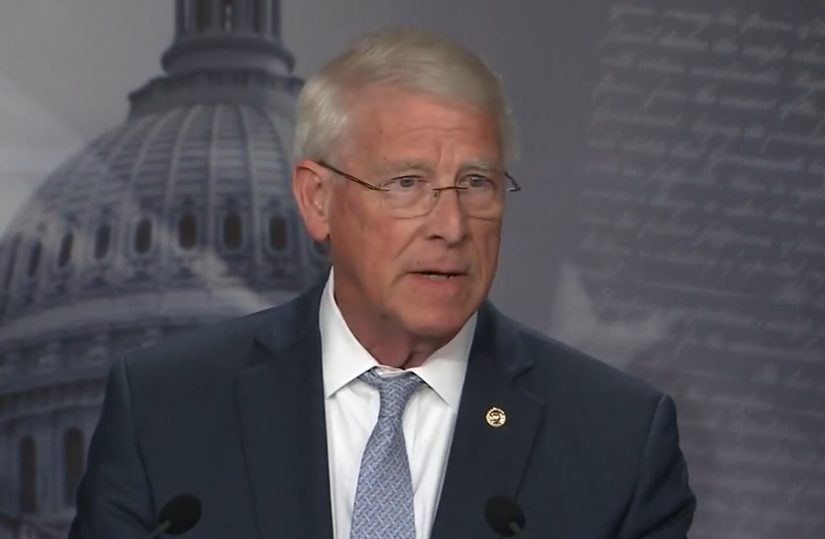
(AP Photo/Rogelio V. Solis - Oct 31, 2015)
Administrators are playing fast and loose with the definition of “shortage.”
The Mississippi Department of Education made headlines recently based on the data presented to the MDE Board on four slides that showed the state had 3,036 certified teacher vacancies and 5,503 educator workforce vacancies.
The mainstream media took the report as gospel without any questioning of where those numbers originated, the actual report referenced in the slides, and whether a teacher shortage actually even exists given the precipitous drop in the total K-12 public school student population in Mississippi in recent years.
According to the U.S. Department of Education’s Teacher Shortage Area Report, Mississippi has shortages in all grades, P-12, in mathematics, science, special education, and world languages for the 2021-22 school year, based on unfilled job postings. But unfilled job postings are a less than desirable baseline from which to actually assess teacher shortages.
Definitionally, a teacher shortage could be talked about in two different ways. First, an episodic shortage would be the shortage of specific expertise in a specific place, such as not having a qualified French teacher in Mound Bayou, which causes services at a local level to go undelivered. Those are critical needs that make an immediate impact and deserve resolution. Then, there is the notion of an overall teacher shortage – statewide – meaning that there are literally fewer teachers than required systemwide. Based on the numbers presented, the case for that is less certain.
Further complicating the analysis is the fact that the numbers presented combine both budgeted and unfilled positions along with teacher positions held by those that are conditionally certified. In other words, an undetermined amount of “shortage” is at least in part defined against open positions on school district organization charts that really may not be meaningfully affecting existing student to teacher ratios.
The mainstream media dutifully rang the alarm bells and the teachers’ lobby, seemingly in a coordinated fashion, ran with those numbers, splashing them across social media in an effort to advocate for more education spending, to push for higher teacher pay, and generally to take jabs at the Republican leadership in Mississippi.
https://www.facebook.com/maetoday/posts/6882053908502212
Russ Latino with Empower Mississippi says the recent reports of teacher shortages certainly paint a startling picture that deserves serious reflection.
“It would be helpful to know how ‘vacancies’ were defined for purposes of the Department of Education’s survey at the heart of these reports,” Latino told Y’all Politics.

The slides say MDE’s Division of Educator Talent Acquisition and Effectiveness conducted an “Educator Shortage Survey” from August 31 to October 11 of this year. They show that 100% of traditional public school district completed the survey. The four slides MDE presented can be seen to the right here.
When Y’all Politics asked MDE for the actual survey results from “Educator Shortage Survey” referenced in the slideshow, MDE’s response was to say that “the critical shortage content found in the PowerPoint previously provided represents the official report.”

MDE further stated that “the reported survey results shared therein are not available in any other document format.” This leaves many unanswered questions, chief among them being what was in the survey, how were the questions structured, and do vacancies actually equate into a shortage. It is objectively hard to discern.
The means to gauge whether a teacher shortage actually exists intuitively is to think in terms of student to teacher ratio.
 The national average for student to teacher ratio sits at 16:1, per Public School Review. With the national average at 16:1. The Magnolia State falls in line with its neighboring states, with Alabama 18:1, Louisiana 18:1, Tennessee 16:1, and Arkansas 14:1.
The national average for student to teacher ratio sits at 16:1, per Public School Review. With the national average at 16:1. The Magnolia State falls in line with its neighboring states, with Alabama 18:1, Louisiana 18:1, Tennessee 16:1, and Arkansas 14:1.
The Mississippi Department of Education reports a steadily declining student population of 442,000, down 36,000 students (7.6%) from just five years ago. Much of that decline is driven by fewer enrollees in kindergarten and a spike in homeschooling.
Using the data from MDE that there are roughly 32,000 teachers in Mississippi, that then equates to a ratio under than 14:1 – less than the national average and better than neighboring states. Assuming the 3,000 plus teachers the report alleges Mississippi school districts are short, the student teacher ratio would be 12.6:1, which would be one of the lowest in the country.
Empower Mississippi’s Latino pointed out that over the last ten years, K-12 public school enrollment in Mississippi has declined by over 10 percent, compared to 493,650 students in 2012. However, budget requests for FY 2023 are topping $3 billion.
“In that same period [2012-2021], the Legislature has raised the annual K-12 budget by more than 10 percent, from just north of $2 billion per year in general funds to $2.3 billion per year. In other words, there are far fewer students being served with more dollars,” Latino said.
However, that does not mean that shortages in select districts are non-existent, especially in those areas, particularly rural areas, that traditionally struggle to retain and attract teachers. Latino says he believes the Governor and legislative leaders are addressing those issues.
“This ‘average ratio’ doesn’t mean there aren’t pockets of crowded classrooms and real teacher shortages, though, particularly in certain areas of the state that are hard to recruit qualified educators to and in certain subject areas that require advanced training,” Latino said. “Both the Governor’s office and legislative leadership have committed to sustained efforts to address teacher compensation, with multiple raises in recent years and publicly stated plans to address the structure systematically in the coming session.”
Latino believes teachers should be compensated well for the value they create in communities and to ensure that Mississippi can compete with surrounding states for the best and brightest educators in the classroom. But pay is only part of the math.
“We believe this can be done in a thoughtful way that ensures our students receive quality instruction and teachers feel appreciated for the difference they make. But compensation is only one part of a complicated equation,” Latino said. “We also have to ensure that teachers have the freedom and support they deserve to teach by reducing top-down bureaucracy that too often ties their hands and be committed to using modern technology to fill gaps and supplement learning where needed.”
Latino says teachers need to know that folks from the principal’s office up to the state Capitol believe in them, have their back, and will harness necessary tools.
“Money matters, but it’s not the sole source of morale,” he added.
That is why Governor Tate Reeves commissioned a group to study how best to address any real shortages in teachers, recognizing that the issue was not merely about money.
The Governor’s Education Human Capital Task Force working with the Southern Regional Education Board researched promising practices and made recommendations to alleviate teacher shortages in Mississippi. Their report (shown below) was presented in August of this year.
The Governor’s Task Force recommended the following to help attract and retain teachers in Mississippi:
- The Task Force recommends that the MDE explore hiring an outside consulting group or
using the state’s university experts to assess marketing needs and provide support. A fully formed marketing campaign is beyond the in-house capacity of the Mississippi Department of Education, but outside entities with specific expertise can help provide a fully realized campaign. The Task Force suggests expanding communication of the value of Mississippi’s teachers. - The Task Force recommends that MDE leadership fully utilizes their Talent Acquisition
group, in partnership with the Department of Employment Security and the State
Workforce Investment Board, to expand statewide workforce development priorities to
teaching and leading within the education system. Agency leaders must be united in the
mission to promote and recruit new candidates into the teaching career. - The Task Force recommends exploring financial incentives at the state and district level,
and discounted teacher degree programs or loan forgiveness programs at the state level,
as incentives to enter a teaching career.
As for teacher pay structure, the Task Force recommends a new minimum statewide salary schedule be developed alongside the new licensure structure, and a regular cost-of-living adjustment explored. They also recommend that the minimum statewide compensation policy include incentive pay for teacher leaders employed in low-socioeconomic school districts. That would help alleviate the areas where teacher shortages are most prevalent.
The Governor’s Task Force concluded that if the steps recommended are acted upon the state could recruit a better talent pool, restore respect to the profession, assure competencies are demonstrated, and guarantee the state’s investment is fruitful.
In truth, it would seem prudent to not paint with a broad brush as it pertains to a discussion on teacher shortages in the state. There are pockets of shortages that undeniably exist, whether due to where they are located, pay and benefits, or the environment created and supported in those districts. Saying, however, that the entire state is experiencing a teacher shortage when there are substantially fewer students to educate and millions of more dollars annually to achieve the goal is not telling the full story.
MS Governor’s Education Human Capital Task Force Report by yallpolitics on Scribd











